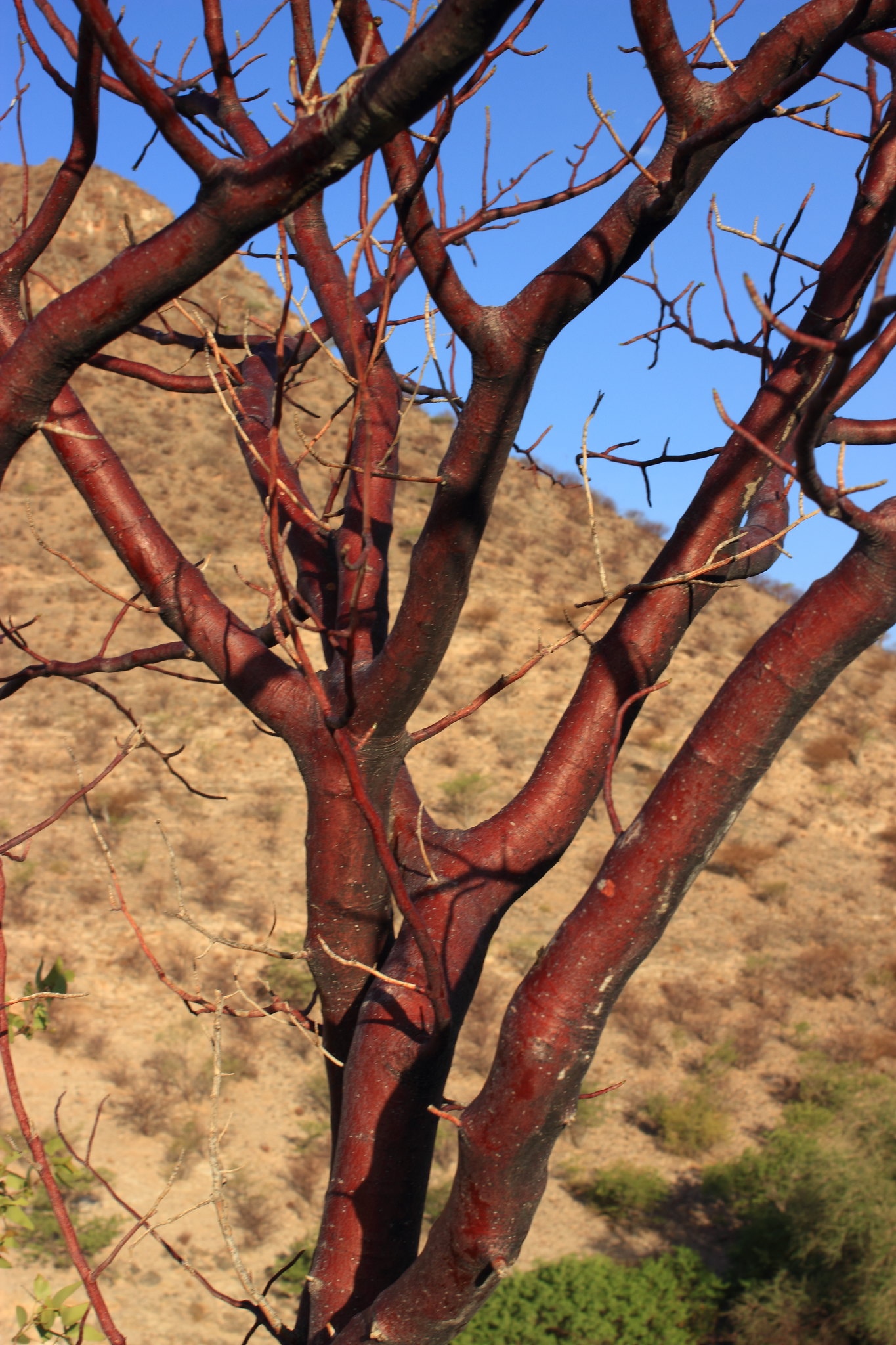
Photo by Alan Self
Namibia
Omuzumba
Commiphora multijuga

Photo by Alan Self
General Description / Cultural Significance
Commiphora multijuga, a member of the Commiphora genus, inhabits the desert scrublands of southwestern Africa, particularly northern Namibia. This species is characterized by its distinct purplish-blue bark and small, spoon-shaped leaflets. Commonly found along rocky slopes in arid regions, Commiphora multijuga plays a vital ecological role by providing moisture and nourishment in otherwise inhospitable environments.
Despite being largely unknown in horticultural circles, Commiphora multijuga is valued for its ornamental qualities when cultivated. The tree’s ability to retain moisture enables it to produce an exceptionally fragrant resin with notes of frankincense, pine, sweet balm, and turpentine. Commercially, this resin is primarily used in the production of perfumes and air fresheners. Additionally, the resin finds applications in Ayurveda for disease treatment, as a natural hair straightening agent, and as a laundry detergent when diluted and boiled in water.
Culturally, the resin of Commiphora multijuga holds significant importance among the Himba people. It serves as a binding agent in the preparation of otjize, a mixture of butterfat, ochre, and resin. Otjize is utilized as a multipurpose topical formula to protect against insect bites and sun exposure, and to promote skin health. The Himba women apply otjize daily as part of their traditional makeup routine, which not only offers protection but also imparts a distinct texture and red tint to the skin, symbolizing the Earth’s red color and blood. Furthermore, the resin is burned in smoke baths, contributing to the cultural practice of maintaining personal and communal hygiene.
Climate Change / Conservation Status
Commiphora species in Southern Africa, including Commiphora multijuga, are classified as being of minimal concern regarding their conservation status. These trees demonstrate remarkable resilience to extreme temperatures and arid conditions. However, they are increasingly threatened by deforestation due to the industrialization of the large plots of land they occupy. Conservation efforts are essential to protect these species from habitat loss and ensure their ecological and cultural contributions continue.
Alternate Names
Corkwood
Purple Stem Corkwood
Sources
Barnett, Errol, and Tim Hume. “The Himba: Namibia’s Iconic Red Women.” CNN, Cable News Network, 18 May 2012, www.cnn.com/2012/05/11/world/africa/himba-namibia-inside-africa/index.html.
“Commiphora.” Commiphora | PlantZAfrica, Jan. 2011, pza.sanbi.org/commiphora.
“Commiphora Multijuga – Purple Stem Corkwood Seeds.” Corkwoods (Genus Commiphora), Jan. 2024, www.rarepalmseeds.com/commiphora-multijuga.
Permanent Mission of the Republic of Namibia to the United Nations. This statement can be found on the World Sensorium original website.

